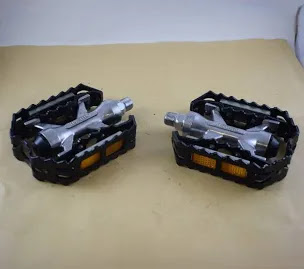If you have ever had a bike stolen, bicycle thieves might seem like the most depraved individuals.
While pilfering Peugeots and Pogliaghis might be some crooks’ métier, others no doubt steal other things. This makes sense when you realize that many bike thefts are crimes of opportunity and the end-game is to sell the bike, whether whole in parts. The same could be said for the filching of other items like jewelry.
I have to wonder, however, about the two perps who entered, without permission, a New Orleans apartment complex on 18 July. They stole a bicycle—and a package containing the remains of a deceased person.
 |
| Surveillance images from NOPD |
While I deplore stealing bikes, I can understand why thieves do it: Bicycles are relatively easy to swipe and sell. I cannot, on the other hand, comprehend a motive for taking someone’s remains. Could it be that the partners in crime took the package simply because it was there and didn’t realize what was inside? Or was there some more complicated motive that involved, say, revenge or simply harassment against a particular person?
Whatever the explanation may be, a bicycle and a package of human remains has to be one of the strangest combinations of theft I—and, possibly, the police officers investigating the case—have ever heard of.


